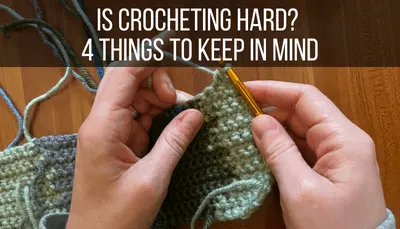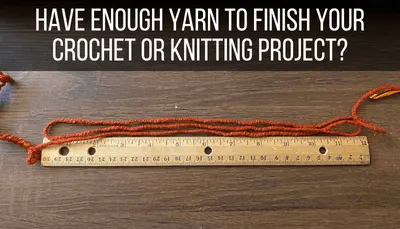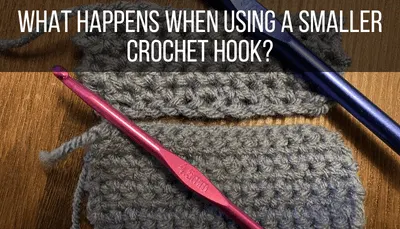Crochet hooks get used a LOT overtime. As the primary tool used in every single crochet project, there’s no doubt that your favorite hooks will start to show some wear and tear after many projects. But, do crochet hooks actually wear out?
Crochet hooks don’t wear out very easily, unless they are low quality and used extensively. Metal and plastic hooks may lose their color and become sticky overtime. Wood crochet hooks may slowly lose their wax coating, which can be fixed by reapplying a coat of needle wax.
The great news for crocheters is that hooks are hardy! I personally have metal crochet hooks and knitting needles that must be over 20 years old by now.
As far as art supplies go, crochet hooks win the award for longevity. Even though yarn needs to constantly be replenished, at least we can rely on our hooks lasting for a long time.

They’re sturdy, simple, and aren’t consumable.
That said, years and use can eventually impact your hooks overtime.
What does that look like exactly?
Firstly, be aware if your crochet hooks start to get sticky or show any noticeable signs of wear and tear.
Generally, you’ll feel this stickiness in your yarn as you’re creating your stitches.
Maybe your yarn doesn’t slide on your hook like it used to and you notice it catching on your hook in places that it never did before.
In the early stages, you may not even notice stickiness as being the problem from the outset. Instead, you start noticing that your crochet process is just a bit more clunky and effortful.
Each stitch doesn’t come as naturally as it used to and you’re having to pay attention more to each stitch. Something just feels off with your crochet hook.
Caring for Wooden Crochet Hooks
If you’re using wooden crochet hooks, the most common issue you could have is with the wax coating wearing out. It’s important to examine your wooden crochet hooks on a regular basis and apply wax to them, if needed.
Wooden crochet hooks are more prone to wearing out than metal or plastic hooks. This is because the wood needs to be cared for on a regular basis. If not, wooden hooks can get sticky and difficult to use.
How you care for your wooden crochet hooks depends on the type of crochet hooks you have. Some may need to be polished, while others simply need to be wiped off with a cloth.
You may find that your specific crochet hooks require more or less attention. That’s why it’s important to examine your hooks on a regular basis.
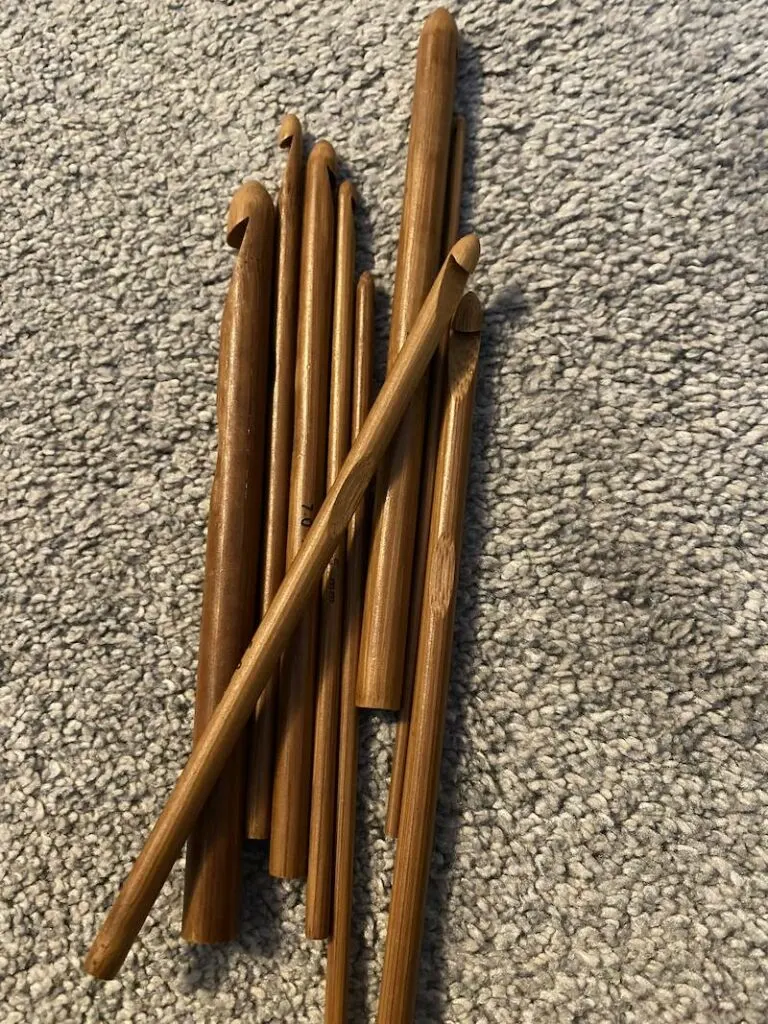
If you’re noticing issues with the wax coating on your crochet hooks, needle wax can help. As the name implies, needle wax can be used to wax your hook and restore that smooth coating that your hook once had.
Depending on how long it takes for your wooden crochet hooks to become sticky and funky, you may decide that it’s easier to simply replace them. It may not be worth it to you to wax and polish your crochet hooks regularly.
That decision is up to you, but it’s nice to have options to either restore or replace when you notice your wooden hooks having some issues.
Caring for Metal and Plastic Hooks
If you’re using metal or plastic hooks, examine your hook for color loss and imperfections. Especially if you bought inexpensive crochet hooks many years ago, color loss and general imperfections could be a sign that your crochet hooks are wearing out.
Color loss in itself isn’t an issue. It’s simply a sign that your hooks have been well used and may not be as functional as they used to be.
If your hooks are losing their color, but you don’t notice any issues with their functionality, that’s great! On the other hand, if visible signs of wear and tear are paired with an inability to use your crochet hooks like you need to, that will be a problem.
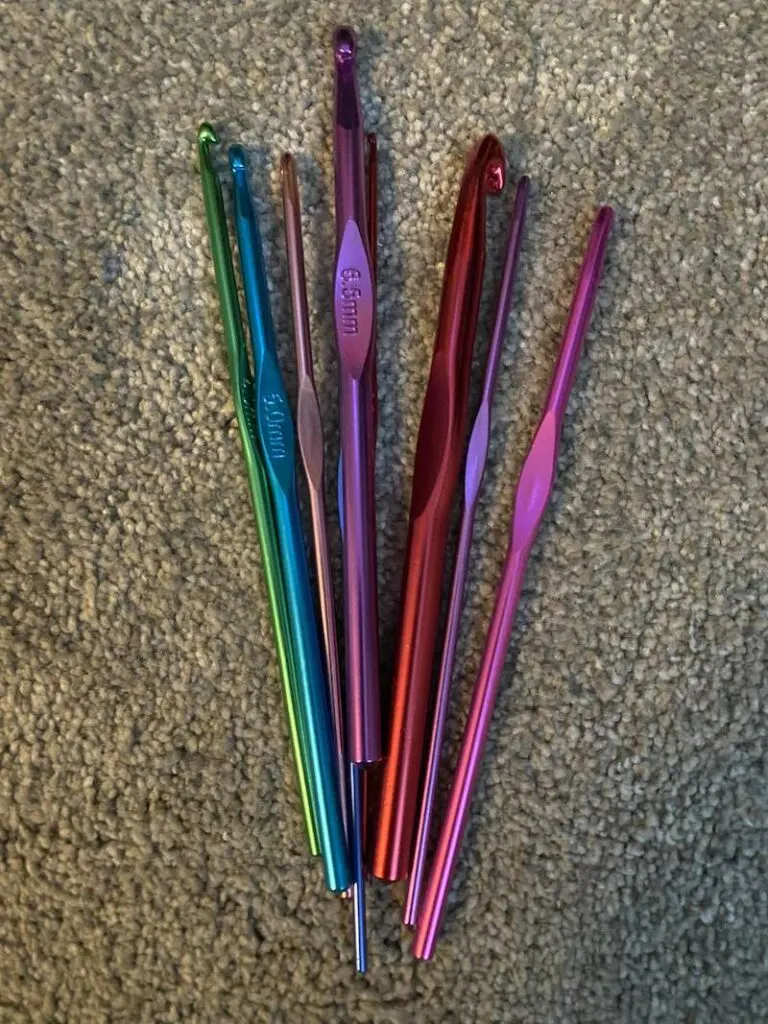
To begin with, clean your crochet hooks. If you’ve been using them for years, you may have a film or buildup covering them that you never noticed.
When our hooks are used for project after project, who knows what happens to them!
As you’re cleaning your hooks, be aware of any rough spots and imperfections. If your cloth catches on anything, make note of that.
Once you’re done cleaning your hook, see if the issue persists. While cleaning your hook won’t restore any color loss, it may remove any grime that was limiting your ability to use your hook properly.
If you’ve examined and cleaned your hooks thoroughly, and you’re still having issues with using them, I’d suggest replacing them.
There are a LOT of crochet hook options at your local craft store or online. Generally, crochet hooks are fairly inexpensive given how long they last. So, if you’re having issues with your hooks, replacement can often be the most hassle-free option.
While I generally love to reuse and restore my materials for as long as possible, there are certain times when it isn’t feasible. With crochet, your crochet hook is your best friend. Without it, you’re going to struggle to create the crochet project you’re looking for.
That’s why I’m picky about ensuring that my crochet hooks are in good shape and working for me. If they’re not, and restoring them isn’t working, replacing them is the best bet.
Generally, crochet hooks don’t wear out very easily. There are crochet artists who have had their trusty crochet hooks for many years, if not decades.
That said, time and heavy use can affect anything and everything. If you’re noticing any wear and tear with your crochet hooks, it’s a good idea to examine them for functionality issues. At the worst, it will give you an excuse to go on an art shopping spree for new crochet hooks!

Diana has been an artist for over 27 years and has training in drawing, painting, digital drawing and graphic design. Diana’s latest obsession is digitally drawing with Procreate and Procreate Dreams. Diana has experience selling her art across a number of platforms and loves helping other artists learn how to make money from their art as well.

